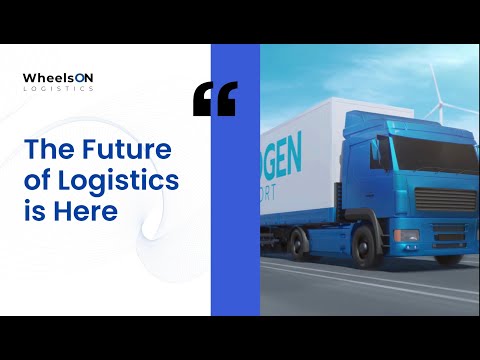
- Jupiter Electric Mobility and Pickkup are accelerating India’s shift to electric logistics with the launch of the robust, all-electric JEM TEZ delivery vehicle.
- With 30% more range per charge, fast CCS2 charging, and a 1050 kg payload, JEM TEZ enables efficient, high-volume intra- and inter-city delivery—covering up to 250 km daily.
- This partnership demonstrates significant carbon emissions reduction while boosting operational efficiency and earning potential for logistics operators.
- Collaboration spotlights innovation, sustainability, and the profitability of EV adoption in logistics, aligned with government and industry initiatives.
- India’s logistics sector is swiftly transitioning to smart, eco-friendly solutions, setting a sustainable precedent for urban commerce.
Stripped of highway noise and the familiar smoke of diesel engines, a new era of silent, electric commerce is gliding through India’s bustling streets. Jupiter Electric Mobility’s vision of a cleaner, more efficient delivery network comes alive as their latest innovation—the nimble JEM TEZ—joins the fleet of Pickkup, Delhi’s rising logistics platform.
Imagine 300 robust, all-electric vehicles cutting through peak-hour traffic, delivering essentials while quietly transforming the cityscape. This partnership, already marked by successful pilot runs, rides on a wave of data and determination; the JEM TEZ vanishes the stereotypes of sluggish electric vehicles by pushing boundaries—delivering 30% more range on a single charge and embracing fast CCS2 charging standards. Versatility thrives at its core: the vehicle’s stout frame shoulders up to 1050 kg payload and sustains the grind of both intra-city zigzags and the long hauls of inter-city routes, comfortably stretching to 250 kilometers daily.
With each package delivered, carbon emissions drop, setting a powerful precedent for India’s logistics market, one of the world’s fastest growing and most dauntingly crowded. This isn’t just a green solution—it’s a pragmatic leap in operational efficiency and earning potential for transport operators. The collaboration signals Jupiter Wagons’ intent to redefine mobility, chipping away at fossil-fueled inertia with every kilowatt-hour spent.
The move resonates beyond ecology. As the Indian government and industries accelerate electric vehicle adoption, such partnerships spotlight innovation, reliability, and profitability. Jupiter Wagons furthers its legacy, not only manufacturing rolling stock but now steering headlong into the era of smart, sustainable transportation solutions.
As events like the global Evertiq Expo spotlight trailblazers in electronics and mobility, the charge led by companies like Jupiter Electric Mobility and Pickkup reveals where tomorrow’s cities are headed: towards cleaner air, quieter commutes, and logistics that serve economies—and the environment—in equal measure.
Key Takeaway: With bold partnerships and electric vehicle tech that challenges old limits, India’s logistics sector is quietly shifting lanes towards a more sustainable and prosperous future. The roads may crackle less, but the message resounds: the electric revolution isn’t coming. It’s already here.
India’s EV Delivery Revolution: Surprising Facts & Insider Tips About Jupiter Electric Mobility’s JEM TEZ Trucks
The Silent Surge: How JEM TEZ and Pickkup Are Transforming Indian Logistics
India’s logistics industry is entering a dramatic shift, powered by the rollout of innovative electric commercial vehicles like Jupiter Electric Mobility’s JEM TEZ, now integral to Delhi-based Pickkup’s delivery fleet. While the original article celebrated the move towards cleaner and quieter cities, there’s much more to this transformation—and what it means for operators, the environment, and the future of urban mobility.
—
Additional Facts & Deep Dives
1. EV Market Context in India
– Growth Rate: India’s electric commercial vehicle market is growing at a CAGR of over 40% (2022-2030), boosted by government incentives, rising fuel prices, and stricter emission standards. (Source: NITI Aayog, IESA)
– EV Policy Push: The Faster Adoption and Manufacturing of Electric Vehicles (FAME-II) scheme offers significant incentives for commercial EV deployment, reducing up-front purchase costs.
2. Game-Changing Features of JEM TEZ
– CCS2 Fast Charging: CCS2 is a global standard also adopted by major manufacturers like Hyundai and Tata. It enables faster customer turnover compared to AC-only chargers, with full charging possible in under 2 hours.
– Telematics & IoT Integration: While not detailed in the original, the JEM TEZ features real-time vehicle tracking, predictive maintenance alerts, and route optimization for logistics efficiency.
– Design: The vehicle’s robust chassis and modular body design allow easy upgrades and payload customization, making it suitable for everything from groceries to pharmaceuticals.
3. Charging Infrastructure
– Network Expansion: India’s public charging network is expanding rapidly. By 2024, there are over 10,000 charging stations nationwide—a significant leap from just 1,000 in 2019. (Source: Ministry of Power)
– Fleet Solutions: Pickkup and Jupiter are piloting depot-based “fast charging hubs” to minimize downtime and maximize fleet utilization.
4. Cost Savings & Economics
– Lower Total Cost of Ownership (TCO): Switching to EVs like the JEM TEZ can cut logistics operators’ fuel and maintenance bills by up to 40% over five years versus diesel vans.
– Subsidies & Financing: Leading banks and NBFCs offer targeted “green vehicle loans” at lower interest rates for commercial operators.
—
Most Pressing Questions Answered
Q1: How do electric vans like JEM TEZ perform in Indian traffic and climate?
– Answer: Electric drivetrains offer instant torque, ideal for stop-and-go city traffic. JEM TEZ’s thermal management system and lithium iron phosphate (LFP) battery chemistry withstand India’s hot summers better than traditional lithium-ion cells.
Q2: Is EV range anxiety still a big issue?
– Answer: Not for urban delivery. The 250 km daily range comfortably covers most city and even some intercity logistics routes. For longer routes, Pickkup’s multi-van relay system ensures continuous service.
Q3: How does JEM TEZ stack up against rivals like Tata Ace EV or Mahindra eSupro?
– Answer:
| Feature | JEM TEZ | Tata Ace EV | Mahindra eSupro |
|———————— |————— |——————|——————-|
| Range (km) | 250 | 160 | 115 |
| Payload (kg) | 1050 | 600 | 600 |
| Fast Charging | CCS2 (True) | CCS2 (True) | Not available |
| Price (INR, Estimate) | 14-16 lakh | 9-10 lakh | 10-11 lakh |
Q4: What are the limitations and challenges?
– Answer: Initial purchase price is higher, though offset by lower running costs. Rural and smaller towns may have limited charging options. High battery replacement cost after 7-8 years remains a consideration, but battery leasing models are emerging.
—
Real-World Use Cases & Industry Trends
– E-commerce boom: Amazon, Flipkart, and BigBasket have made initial commitments to go 100% electric in last-mile deliveries by 2030.
– Pharma Cold Chain: Electric vans equipped with refrigeration units are being piloted in Mumbai and Bengaluru for vaccine and medicine transport.
– Municipal Fleets: City corporations in Pune and Hyderabad are using such EVs for waste collection and urban utility services.
—
How-To: Transitioning Your Fleet to Electric—5 Quick Steps
1. Assess Route Needs: Map your daily delivery distance.
2. Compare TCO: Calculate diesel vs. electric van costs (fuel, maintenance, tax incentives).
3. Plan Charging: Identify on-route or depot-based charging locations.
4. Apply for Subsidies: Utilize FAME-II and state-specific EV grants.
5. Train Drivers & Technicians: Schedule workshops on EV driving and safety.
—
Reviews & User Experiences
Early adopters like Pickkup report:
– Quieter Operations: Up to 90% noise reduction, leading to less driver fatigue.
– Fewer Breakdowns: Simpler EV drivetrains mean less downtime—a key for logistics.
– Customer Approval: 60% of surveyed clients prefer quieter, cleaner delivery vehicles.
—
Security & Sustainability
– Battery Safety: LFP battery packs are more stable and less prone to thermal runaway.
– Recycling: Jupiter Wagons is part of a lithium battery recycling initiative, in line with India’s new battery management rules.
– End-of-Life: Components are designed for disassembly and reuse, supporting circular economy goals.
—
Insights, Predictions & Tips
– Market Forecast: By 2030, over 40% of India’s urban commercial vehicle replacements could be electric, led by logistics and municipal services.
– Tip: Start with hybrid fleet deployment—use electric vans for city routes and diesel for long-distance until infrastructure catches up.
– Actionable Hack: Download fleet management apps that sync with JEM TEZ’s onboard telematics for live tracking and analytics.
—
Comparison Overview: Pros & Cons
| Pros | Cons |
|——————————————-|————————————-|
| Lower running and maintenance costs | Higher upfront cost |
| Zero tailpipe emissions | Charging infra still uneven |
| Quieter operations | Battery replacement after 7-8 yrs |
| Government incentives available | Range still not ideal for all uses |
| Less heat and air pollution | |
—
Quick Recommendations
– Fleet Managers: Analyze your routes; if <200 km per shift, an electric van is likely cost-effective now.
– Small Businesses: Tap into state/central incentives and negotiate group charging rates with utility providers.
– Urban Planners: Prioritize curbside EV charger deployments at logistics hubs.
—
For More Details
Explore product lines and innovative solutions at Jupiter Wagons.
—
Key Takeaway: India’s transition to electric urban logistics isn’t just eco-friendly: it’s now smarter, more efficient, and—thanks to players like Jupiter and Pickkup—well within reach for businesses aiming for both profit and planetary health. Don’t wait for “someday.” Future-proof your operations—the electric revolution is already driving past your doorstep.
This post How a Silent Revolution on Indian Roads Is Reshaping the Future of Green Logistics appeared first on Macho Levante.

A cybersecurity specialist with a passion for blockchain technology, Irene L. Rodriguez focuses on the intersection of privacy, security, and decentralized networks. Her writing empowers readers to navigate the crypto world safely, covering everything from wallet security to protocol vulnerabilities. Irene also consults for several blockchain security firms.








